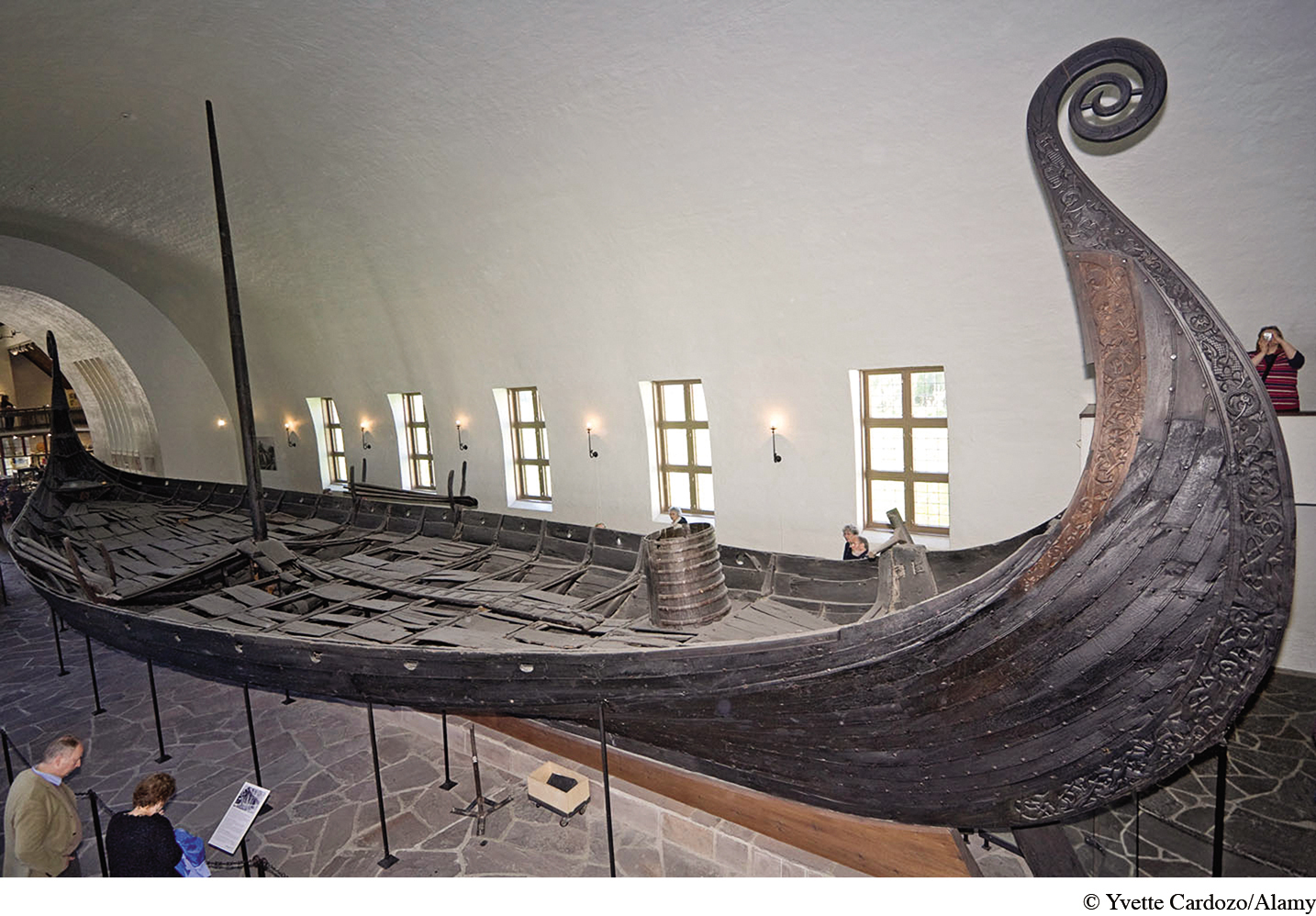ZOOMING IN: Thorfinn Karlsefni, Viking Voyager

While the peoples of the Eastern and Western hemispheres remained almost completely isolated from one another before Columbus, the Viking journeys to North America, part of a larger age of Viking expansion, represent an exception to that generalization. Between 800 and 1050, Scandinavian Vikings had raided, traded, and sometimes settled across much of Europe, generating a fearful reputation. They also colonized Iceland and Greenland, and from that base sought yet more land in North America. Yet their transatlantic voyages, although impressive feats of oceanic exploration, represented a historical dead end, for they bore no long-
Among those voyagers was Thorfinn Karlsefni, who set off from southern Greenland in the spring of 1007 bound for what he called Vinland, and what we know as North America. A well-
Arriving along the coast of what is now Newfoundland, Thorfinn and his people first looked for pastureland for the cattle that had accompanied them. With food in short supply, the first winter was very difficult and provoked a religious controversy. The Christians among the group “made prayers to God for food,” but Thorhall, a large, solitary, and “foul-
The following spring, the small Viking community had its first encounter with native peoples when dozens of canoes described in the sagas as “black, and ill favoured” appeared offshore. What followed was a kind of mutual inspection, as the natives “stayed a while in astonishment” and then rowed away. They returned the following year, this time to barter. The Vikings offered red cloth and milk porridge in exchange for furs and skins. But what began as a peaceful encounter ended badly when a bull from the Norsemen’s herd erupted out of the forest, bellowing loudly. The surprised and frightened locals quickly departed, and when they returned three weeks later, violence erupted. Considerably outnumbered and attacked with catapults and a “great shower of missiles,” Thorfinn and his company reacted with “great terror.”
This encounter and the “fear of hostilities” that it provoked persuaded the Vikings “to depart and return to their own country.” As they made their way north along the coast, they came upon a group of five natives sleeping near the sea. Perhaps in revenge, the Vikings simply killed them. In another incident before departing for home, they captured two boys, baptized them as Christians, and taught them the Viking language. After three difficult years in this remote land, Thorfinn and Gudrid returned home, with a son named Snorri, the first European born in the Western Hemisphere.
Although intermittent Viking voyages to North America probably occurred over the next several centuries, the Vikings established no permanent presence. Their numbers were small, and they lacked the support of a strong state, such as Columbus and the Spanish conquistadores later enjoyed. For some time, many doubted that those voyages had occurred at all. But in the 1960s, archeological work on the northern tip of the island of Newfoundland uncovered the remains of a Norse settlement dating to the time of Thorfinn’s visit. Eight sod dwellings, evidence of ironworking and boat repair, and household items such as needles and spindles confirmed the existence of a Viking settlement, consisting of both men and women. The interaction of Thorfinn and the other Vikings with native peoples of North America raised, but did not answer, the question of how the epic encounter of these two continents would turn out. The later voyages of Columbus and other West Europeans provided that answer.
Question: How might these interactions have appeared if the descriptions of these encounters had been derived from the sagas of the native peoples of North America?